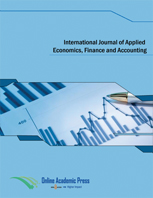Extending the economic framework to model correlations between PD, LGD, and EAD
DOI:
https://doi.org/10.33094/ijaefa.v21i2.2117Keywords:
Capital, Expected credit loss, Forward looking information, IFRS9, Provisions.Abstract
This study examines the extension of the economic framework to correlations between PD, LGD, and EAD. We build on a framework that has already been used to figure out and adjust the relationships between loan portfolios’ Probability of Default (PD), Loss Given Default (LGD), and Exposure at Default (EAD). Our analysis explores the implications of incorporating these correlations in portfolio losses, arguing that this structure enables institutions to apply forward-looking correlation models to assess the likelihood of obligor credit quality deterioration, commonly referred to as a significant increase in credit risk (SICR). According to International Financial Reporting Standards (IFRS)-9 regulations, the estimation of SICR and forward-looking information should not entail excessive cost or effort. In line with this principle, we contend that only a limited number of inputs are necessary to implement this robust framework, which allows users to evaluate meaningful forward-looking correlations, identify obligors likely to experience SICR, and ultimately measure a more accurate Expected Credit Loss (ECL). The adoption of this approach will allow institutions to better understand their credit risk and better assess their credit risk practices while adhering to regulatory requirements.
Downloads
Published
Issue
Section

This work is licensed under a Creative Commons Attribution-NonCommercial 4.0 International License.




